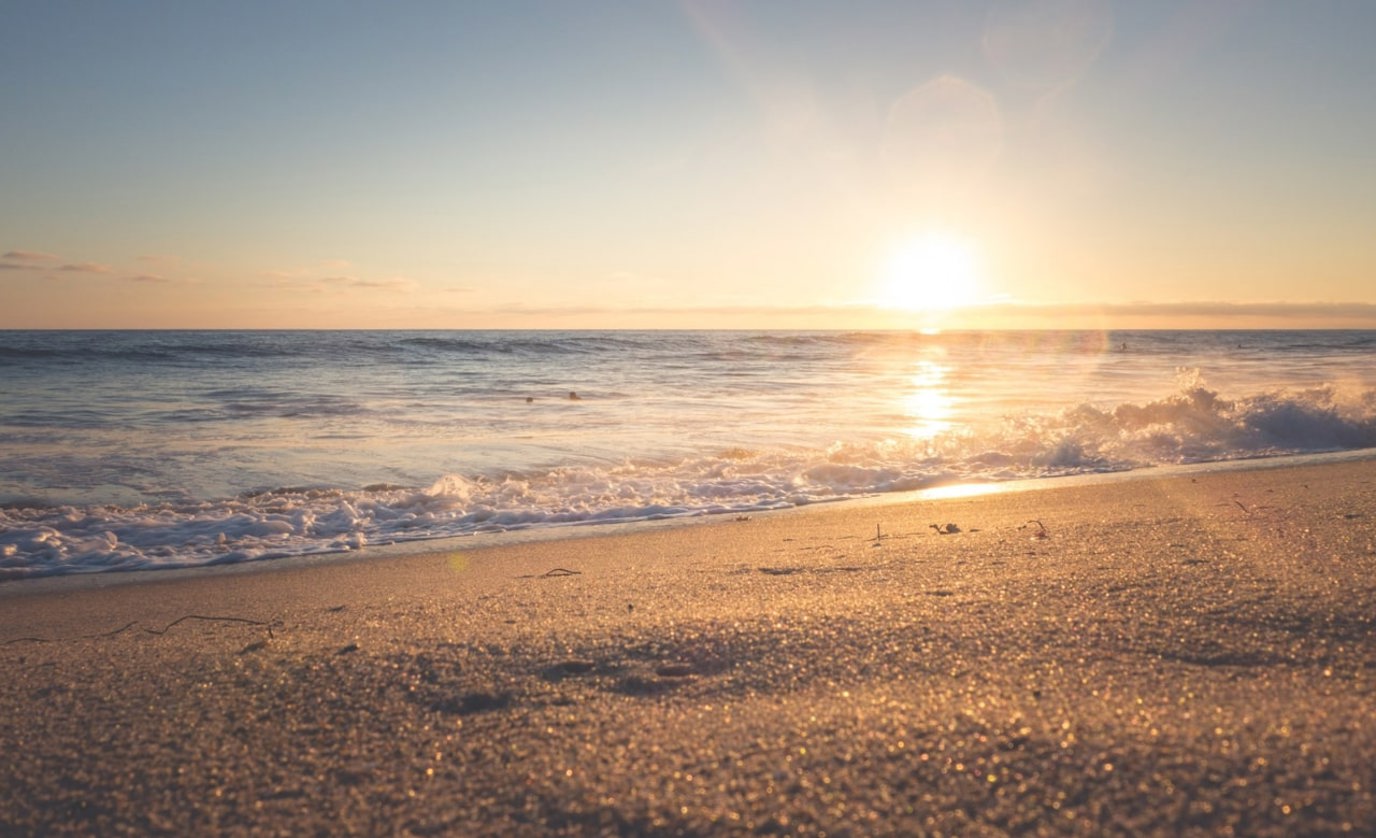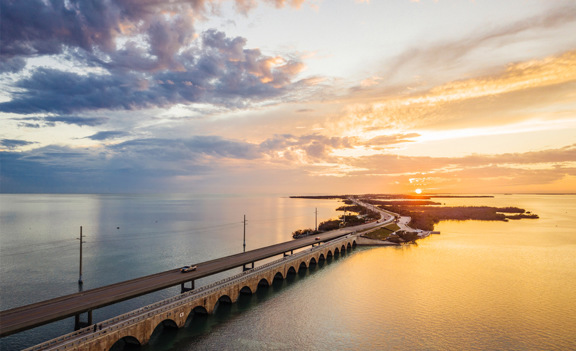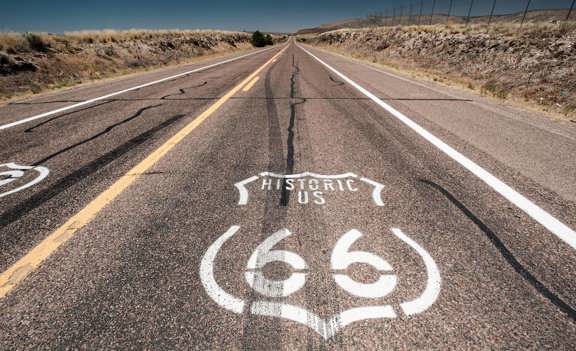

Florida is more than just beaches and theme parks—it’s a state filled with layers of history that stretch back centuries. From ancient Native American mound sites to the Spanish forts of the colonial era and presidential retreats in the 20th century, the Sunshine State is home to some of the most remarkable historical sites in Florida. Whether you’re fascinated by military strongholds, literary legacies, or architectural treasures, these destinations help modern visitors connect with the stories of the past.
What makes exploring these places even better? Hitting the road in an RV. Traveling by RV allows families and history buffs alike to explore at their own pace, stop at smaller towns or districts along the way, and wake up right next to a special place that once shaped the course of America. You can park near historic sites, cook your own meals, and spend evenings reflecting on the day’s discoveries beneath the Florida skies.
This guide highlights some of the most unforgettable historic landmarks and historic places across the state—from the oldest house in St. Augustine to the Truman Little White House in Key West. Each destination offers more than just sightseeing; they provide meaningful moments that help families discover the cultural threads that continue to shape Florida today.
St. Augustine: Exploring the Oldest Historical Sites in Florida
No list of historic places would be complete without mentioning St. Augustine, often called the nation’s oldest city. Founded by the Spanish in 1565, this coastal gem is filled with structures that reflect more than four centuries of history. Walking its cobblestone streets feels like stepping back into the past, where every corner tells a story of conquest, culture, and preservation.
Must-See Spots in St. Augustine
-
Castillo de San Marcos National Monument – Built in the late 1600s, this imposing stone fort overlooking the Matanzas River is one of the most iconic historic landmarks in the country. Managed today by the National Park Service, the fort has withstood wars, sieges, and changing empires. Families can stroll the grounds, explore its well-preserved interior rooms, and admire the view from its bastions.
-
Historic Districts Listed on the National Register – St. Augustine’s districts are filled with colonial-era homes, churches, and structures that are eligible for preservation due to their architectural significance. These districts listed on the National Register of Historic Places remain vibrant, with shops, cafés, and galleries that blend old-world charm with modern entertainment.
RV Travel Tip
St. Augustine is RV-friendly, with several campgrounds located just outside the city. Anastasia State Park is a favorite, offering shaded campsites, nature trails, and easy access to both the beach and historic downtown. Staying here makes it simple to spend your days exploring historic sites and your evenings relaxing along the Atlantic coast.
Dry Tortugas National Park: Remote Historic Sites Worth the Journey
If you’re looking for one of the most unique historic sites in the country, Dry Tortugas National Park is a must. Located about 70 miles west of Key West in the middle of the Atlantic Ocean, this park feels like a hidden world. Accessible only by boat or seaplane, it combines natural beauty with fascinating history—a perfect mix for adventurous families.
Must-See Spots in Dry Tortugas
-
Fort Jefferson – At the heart of the park lies Fort Jefferson, one of the largest masonry forts ever constructed in the United States. Though never fully completed, its massive walls and cannons still reflect the strategic importance of this site in the 19th century. Families can stroll the grounds, step inside its brick corridors, and imagine what life was like for soldiers stationed here.
-
Snorkeling and Nature Trails – Beyond its military structures, Dry Tortugas is also known for coral reefs and crystal-clear waters. Families can swim alongside tropical fish, spot sea turtles, or take ranger-led programs offered by the National Park Service. Short nature trails allow you to explore the island itself, where seabirds nest and coastal plants thrive.
-
Artifacts and Preservation – Exhibits throughout the fort display recovered artifacts that tell stories of sailors, soldiers, and prisoners who once lived here. Ongoing preservation efforts ensure that these historic landmarks remain intact for future visitors to admire and learn from.
RV Travel Tip
While you can’t drive an RV to the park itself, basing your trip in Key West makes the adventure easy. Several campgrounds around the city welcome RVs, offering full hookups and easy shuttle access to ferry terminals. Staying nearby lets you enjoy the laid-back culture of Key West while still taking a day to explore one of Florida’s most unforgettable historic places.
Fort Zachary Taylor: Civil War History on the National Register
Among the many historic landmarks in Florida, Fort Zachary Taylor Historic State Park in Key West holds a special place. This impressive fort was constructed in the mid-1800s to protect the southern coastline, and today it’s one of the region’s most fascinating historic sites. Its preserved brick walls and coastal setting offer both educational and recreational opportunities for modern visitors.
Why Fort Zachary Taylor Matters
-
Civil War Legacy – Fort Taylor played a major role during the Civil War, serving as a Union stronghold that helped control shipping in the Atlantic Ocean and Gulf of Mexico. The fort still remains filled with cannons and military artifacts, offering a vivid connection to this turbulent century in American history.
-
National Register Recognition – The site is officially listed on the National Register of Historic Places, which means it is recognized as an important property worthy of preservation. Families who visit can admire the massive brick structures and learn how they were built to withstand decades of conflict and changing technology.
-
A Place to Explore – In addition to the historic tours, the park offers shaded picnic grounds, snorkeling beaches, and nature trails where kids can spot tropical fish and seabirds. It’s a site that blends cultural preservation with natural beauty, making it both educational and fun.
RV Travel Tip
Staying in an RV near Key West allows you to spend a full day exploring Fort Zachary Taylor while also enjoying the island’s other attractions. Local campgrounds and RV resorts are eligible for both short weekend stays and longer trips, giving families a comfortable home base just minutes from this historic place.
Climbing the Key West Lighthouse for Panoramic Views of History
The Key West Lighthouse is one of the island’s most beloved historic landmarks and a must-see for families exploring the Keys. First built in 1848 to guide ships safely past the reef, this iconic structure has stood watch for generations, surviving hurricanes and witnessing centuries of change. Today, it’s more than just a navigational aid—it’s a historic site that families can climb, explore, and truly admire.
Why Visit the Key West Lighthouse?
-
A Bird’s-Eye View – Climbing the 88 iron steps rewards visitors with sweeping views of the island. From this point, you can see the turquoise waters of the Gulf and the rooftops of Old Town. It’s an unforgettable experience for kids and adults alike.
-
Keeper’s Quarters Museum – Next to the lighthouse, the restored Keeper’s Quarters tells the story of the men and women who tended the light. Exhibits showcase personal artifacts, photographs, and maritime history that bring their daily lives into focus.
-
Old-World Charm – Beyond its practical role, the lighthouse exudes historic charm. The whitewashed tower, shaded gardens, and peaceful setting provide a quiet break from the bustle of downtown Key West. Families can wander the grounds, take photos, and appreciate the resilience of this coastal treasure.
RV Travel Tip
If you’re visiting the Key West Lighthouse by RV, plan to stay at one of the local campgrounds or RV resorts on Stock Island, just a short drive away. These campgrounds give you easy access to Old Town attractions, making it simple to spend the day climbing one of Florida’s most iconic historic places and the evening enjoying the laid-back culture of the island.
Presidential Florida: The Truman Little White House
Nestled in the heart of Old Town Key West, the Truman Little White House is one of Florida’s most fascinating historic landmarks. Once a naval officer’s residence, it gained prominence in the mid-20th century when President Harry S. Truman used it as his winter retreat. Today, it stands as both a museum and a living piece of American history, offering families a unique look at presidential life away from Washington, D.C.
Why Visit the Truman Little White House?
-
Presidential Retreat – Truman spent 175 days of his presidency here, conducting official business while enjoying the warm Florida climate. The home became a backdrop for major decisions during his administration, blending casual living with high-stakes governance.
-
Cold War Significance – Beyond Truman, the house was also visited by later leaders and played a role in national discussions during the Cold War era. Touring the rooms allows visitors to imagine the conversations and decisions that once took place within its walls.
-
Guided Tours and Artifacts – Families can take docent-led tours that showcase original furnishings, preserved artifacts, and stories about the dignitaries who stayed here. These tours make the property feel less like a museum and more like stepping directly into the mid-20th century.
RV Travel Tip
Staying in an RV around Key West makes it easy to pair a visit to the Truman Little White House with nearby attractions like Fort Zachary Taylor or the Key West Lighthouse. Local RV parks and campgrounds are close to downtown, letting you park comfortably and spend your day immersed in presidential and maritime heritage before returning to your home-on-wheels for a relaxing evening.
Fort Clinch and Amelia Island: Coastal Historic Landmarks
On Florida’s northeast coast, Fort Clinch State Park on Amelia Island offers families a chance to step back in time. This 19th-century fort is one of the state’s most impressive historic landmarks, known for its brick walls, scenic shoreline, and immersive living-history programs. For families seeking both adventure and education, it’s an excellent weekend stop.
Why Visit Fort Clinch?
-
Restored History – Much of the fort has been carefully restored, allowing modern visitors to walk through original rooms, barracks, and artillery positions. Costumed reenactors bring the site to life, demonstrating how soldiers lived and worked more than a century ago.
-
Civil War Remains – The fort’s strategic location made it a valuable outpost during the Civil War, and many features still remain intact. Exploring the grounds gives kids a sense of how the fort once protected the coastline while serving as a military hub.
-
Beautiful Grounds – Beyond the historic structures, Fort Clinch State Park also features miles of nature trails, fishing piers, and beach access. Families can picnic on shady grounds, hike through coastal hammocks, or simply enjoy the ocean breeze.
RV Travel Tip
The state park itself has an RV-friendly campground, making it easy to stay overnight and enjoy both the fort and the island. Sites come with water and electric hookups, and some are shaded by moss-draped oaks. Staying here gives families direct access to both the historic property and the natural beauty of Amelia Island without needing to leave the park.
Crystal River Mounds: Native American Historical Sites
Long before Spanish explorers arrived in Florida, Indigenous cultures thrived here, leaving behind some of the state’s most fascinating historical sites. The Crystal River Archaeological State Park, located along Florida’s Gulf Coast, preserves burial mounds, temple mounds, and plaza areas that were used by Native Americans for more than 1,600 years.
Why Visit Crystal River Mounds?
-
Ancient Heritage – This site was once a major ceremonial center where people gathered for trade, rituals, and community life. Families can explore six large mounds and imagine what daily life might have been like centuries before European contact.
-
Artifacts on Display – The on-site museum houses original artifacts including pottery, stone tools, and ornaments that highlight the craftsmanship and traditions of Florida’s earliest inhabitants. Interactive exhibits help children and adults better understand the importance of these finds.
-
Preservation and Education – Now protected as a state park, Crystal River is an excellent example of cultural preservation. Ranger talks and interpretive signs guide visitors through the site, ensuring the stories of these ancient people are not forgotten.
-
A Peaceful Setting – Beyond its archaeological significance, the park’s riverside location offers natural beauty and opportunities for birdwatching, picnicking, and walking along shaded nature trails. It’s a destination that balances education with quiet reflection.
RV Travel Tip
Crystal River Archaeological State Park does not have its own campground, but nearby RV parks and state campgrounds provide full hookups and family-friendly amenities. Staying locally allows families to spend a day exploring this remarkable historic place before heading out to enjoy Crystal River’s other attractions, like manatee tours and waterfront dining.
Marjorie Kinnan Rawlings House: Literary Historic Places
Not all of Florida’s historic places are forts or lighthouses—some are tied to the state’s cultural and literary legacy. At Cross Creek, families can tour the homestead of Pulitzer Prize–winning author Marjorie Kinnan Rawlings, best known for her classic novel The Yearling. Preserved as a state historic site, the property offers a glimpse into rural Florida life in the 1930s and 1940s.
Why Visit the Rawlings House?
-
Step Into a Story – Rawlings wrote many of her works here, inspired by the surrounding orange groves, gardens, and nearby waterways. Walking through her home lets visitors connect directly with the setting that shaped her award-winning literature.
-
Old Florida Charm – The house and grounds maintain their rustic, Depression-era feel. Families can wander past the original farmhouse kitchen, admire vintage furnishings, and soak in the historic charm of a simpler time.
-
Educational Value – Ranger-led tours explain how Rawlings balanced farm life with writing, and exhibits display original manuscripts, photographs, and household artifacts. It’s a chance for kids to see how history and creativity come together in one inspiring property.
-
Beautiful Grounds – Shaded by moss-draped oaks and bordered by citrus trees, the site’s grounds invite families to slow down, picnic, and enjoy a taste of rural Florida living.
RV Travel Tip
While the Rawlings House doesn’t have its own campground, nearby state parks like Paynes Prairie Preserve offer RV campsites with water and electric hookups. Staying here lets families enjoy both the historic homestead and outdoor activities like hiking and wildlife viewing, all within a short drive.
St. Augustine’s Oldest House: A Window Into Colonial Life
In the heart of St. Augustine, the González–Álvarez House—often called the Oldest House—is one of the most important historical sites in Florida. Dating back to the early 1700s, it stands as the oldest surviving Spanish colonial dwelling in the state and offers families a unique opportunity to step directly into the past.
Why Visit the Oldest House?
-
Living History – Guided tours walk visitors through rooms furnished with period pieces, sharing stories of the families who lived here for centuries. It’s a hands-on way to connect with everyday colonial history.
-
Architecture to Admire – The home’s coquina stone walls and clay-tile roof reflect the durability and craftsmanship of early Spanish settlers. Families can admire how this enduring structure has survived wars, fires, and storms while still retaining its original charm.
-
Historic Complex – The site also includes a museum, ornamental gardens, and additional exhibits highlighting St. Augustine’s role as the oldest continuously occupied European settlement in the United States. Together, they provide a well-rounded experience that blends education with exploration.
RV Travel Tip
RV travelers can easily access the Oldest House from campgrounds around St. Augustine, such as Anastasia State Park, which offers RV-friendly sites close to the city. Staying nearby means you can spend a full day exploring the Oldest House, Castillo de San Marcos, and the surrounding historic districts without needing to rush.
Fort Matanzas: Defending Florida’s Historic Sites
Just south of St. Augustine lies Fort Matanzas National Monument, a smaller but equally fascinating stop among Florida’s many historic sites. Built in 1742 by the Spanish, the fort was designed to guard the southern entrance to the city and protect it from foreign invaders. Though more compact than its larger counterpart, Castillo de San Marcos, Fort Matanzas offers families a quieter, more intimate look at colonial military history.
Why Visit Fort Matanzas?
-
Strategic Defense – The fort’s location on the Matanzas River gave Spanish soldiers a key vantage point to defend St. Augustine. Today, ranger-led boat tours ferry visitors to the island, where they can explore the small watchtower and learn how it once safeguarded the coastline.
-
Preserved Remains – Despite centuries of exposure to salt air and storms, much of the original structure remains intact. Families can walk the narrow stairways, peer out cannon ports, and appreciate the engineering that kept the fort standing strong.
-
Preservation Efforts – The National Park Service oversees ongoing preservation, ensuring this important historic place is maintained for future generations. Interpretive signs, demonstrations, and programs help kids and adults alike connect with the fort’s story.
-
Natural Beauty – Beyond the fort itself, the monument protects surrounding marshlands and dunes. Short nature trails let families enjoy birdwatching and picnicking in a serene coastal setting.
RV Travel Tip
While Fort Matanzas does not have an on-site campground, RVers can stay at nearby Anastasia State Park or other campgrounds around St. Augustine. This makes it easy to combine a visit to Fort Matanzas with other local historic landmarks like the Oldest House and Castillo de San Marcos, creating a full weekend of exploration.
Bonus Stop: Walking the Old Seven Mile Bridge in Key West
Not all of Florida’s treasures are forts or museums—some are feats of engineering that became historic landmarks in their own right. The Old Seven Mile Bridge, part of Henry Flagler’s ambitious Overseas Railroad, once connected the Florida Keys to the mainland. Today, a restored portion of the bridge near Marathon offers families a safe place to walk, bike, or simply take in the sweeping ocean views.
Why Visit the Old Seven Mile Bridge?
-
A Living Piece of History – First built in the early 1900s, the bridge was considered an engineering marvel of its time. Though no longer used for trains or cars, the restored span serves as a historic place that families can experience firsthand.
-
Scenic Beauty – From the bridge, visitors can admire turquoise waters, spot dolphins or sea turtles, and enjoy one of the most photographed views in the Florida Keys. It’s a perfect stop to stretch your legs and soak up coastal charm during a weekend trip.
-
Family-Friendly Activities – The bridge leads to Pigeon Key, a tiny island rich with railroad history and educational exhibits. Families can tour historic cottages, view artifacts, and learn about the workers who helped make the project possible.
RV Travel Tip
While you can’t camp directly on the bridge, several RV parks in Marathon and Key West give you easy access to this iconic stop. Parking your RV nearby lets you enjoy both the Old Seven Mile Bridge and other historic sites in the Keys, from the Key West Lighthouse to the Truman Little White House.
Tips for Visiting Florida’s Historic Treasures by RV
Exploring Florida’s historic sites by RV is one of the best ways to make the most of your journey. You’ll have the flexibility to visit multiple destinations in a single trip while enjoying the comfort of a “home on wheels.” To get the most out of your adventure, keep these tips in mind:
-
Plan Your Route Around Key Stops – Florida is a large state, and many of its historic landmarks are spread out from St. Augustine to Key West. Mapping your route in advance ensures you don’t spend more time driving than exploring. Consider clustering sites in regions, like combining St. Augustine’s oldest house with nearby Fort Matanzas and Castillo de San Marcos.
-
Book Campgrounds Early – Many popular destinations, especially those near national monuments or the National Register of Historic Places, can fill up months ahead. Reserve your RV campsite as soon as your travel dates are set. This is especially true for prime spots like Anastasia State Park or Henderson Beach State Park.
-
Pack for Both History and Nature – Florida’s historic treasures often sit side-by-side with natural beauty. You might spend a morning walking through a centuries-old structure and the afternoon hiking shaded nature trails. Bring layers, sunscreen, insect repellent, and comfortable shoes for both.
-
Balance Learning with Fun – Kids may get restless if the trip feels like a string of museums. Mix in beach stops, boat rides, or wildlife viewing alongside your history lessons to keep energy levels high.
-
Take Advantage of On-Site Programs – Many parks and museums offer ranger talks, reenactments, or Junior Ranger programs. These experiences help children connect to the history and bring the stories behind each site to life.
-
Stay Flexible – Florida weather can be unpredictable, and storms sometimes impact access to outdoor historic places. Always have a backup plan for indoor attractions or nearby alternatives.
-
Choose the Right RV – Cruise America makes it simple to pick the RV size that fits your family. From compact models to larger RVs with room for everyone, you’ll find options that make your historical road trip comfortable and stress-free.
RV Travel Advantage
When you travel in an RV, every destination becomes more accessible. You can park near major attractions, cook your own meals between tours, and retreat to a familiar space after a day of exploring forts, lighthouses, and museums. For families, it means less stress and more bonding—exactly what a weekend of history and travel should be about.
Ready to Tour Historic Florida?
So pack your bags, map your route, and let Cruise America help you hit the road. With a reliable RV rental, you can explore Florida’s history at your own pace and create memories your family will cherish for years to come. Book your RV now!





